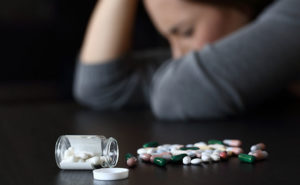Epidemic Outline:
Each day in America over 130 people have a fatal overdose from opioids(1). The addiction and misuse of opioids, including heroine and synthetic opioids (fetanyl), is no doubt a national crisis affecting the public health – the people we love. It has been determined that the rising number of opioid prescriptions in the USA directly correlates to the number of deaths from opioid overdoses(2).
Implementations for improvement:
August 24, 2016, was the first time in the 145-year history of the Office of the Surgeon General that a letter was mailed to 2.3 million doctors, nurses, dentists, and other clinicians asking them to help address America’s escalating opioid epidemic. The letter suggests that the prescription of opioids should not be the first line of treatment for chronic pain.
The U.S. Department of Health and Human Services (HHS) is focusing its efforts on five major priorities to combat the opioid crisis:
- improving access to treatment and recovery services
- promoting the use of overdose-reversing drugs
- strengthening our understanding of the epidemic through better public health surveillance
- providing support for cutting-edge research on pain and addiction
- advancing better practices for pain management
A component of HHS, The National Institutes of Health, leads the nation in medical research helping lighten the crisis through discovering preventative ways to lower opioid misuse. NIH met with pharmaceutical companies and academic research centers in the summer of 2017 to discuss:
- Safe, effective, non-addictive strategies to manage chronic pain
- New, innovative medications and technologies to treat opioid use disorders
- Improved overdose prevention and reversal interventions to save lives and support recovery
However, the opioid epidemic cannot be solved by the government alone. Also required will be engagement and leadership from clinicians, and society itself. Clinicians especially have a unique opportunity to address the crisis with prescription monitoring, recognition of misuse, and expanding practices to include and techniques to give patients more treatment options. It’s important that those who can, use their voices to raise awareness and push for a better approach to addressing the crisis in health care institutions, society, and in government. By creating an environment where people are understanding about the vicious disease of addiction, those who are addicted can feel safe and welcomed to ask for help. Then clinicians can offer real solutions to chronic pain, which will be key in reversing the hold opioids have on our nation.
How can MLS Laser Therapy help?

Podiatrists, Chiropractors, Orthopedic Surgeons, and pain management practices nationwide have been experiencing a shift in the health care system. With declining insurance reimbursements and the opioid scare going on, many are utilizing MLS Therapy as an alternative option for relief of pain, inflammation, and swelling.
Many patients that opt for MLS Laser Therapy as an alternative find themselves getting back to normal activity quicker with fewer opiates, or even none at all! Whether it be chronic pain, neuropathy, plantar fasciitis, pre or post surgery, sports injuries and more, there is now a side-effect free option.
Check out more on MLS Laser Therapy here
______________________________________________________________
Resources:
- Johannes CB, Le TK, Zhou X, Johnston JA, Dworkin RH. The prevalence of chronic pain in United States adults: results of an Internet-based survey. J Pain 2010;11:1230-1239




